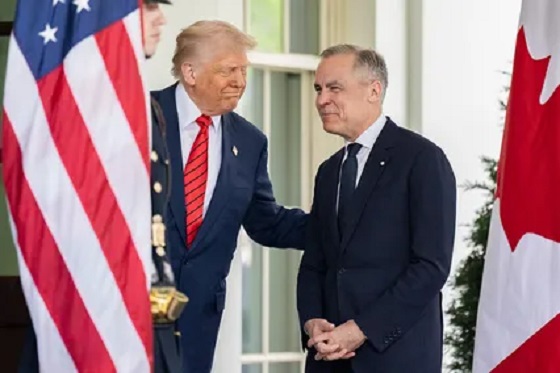Business
The SBF Scandal: The Players and the Money

From the Brownstone Institute
BY
The complexities of the FTX scandal with Sam Bankman-Fried at the helm boggles the mind. Unlike the Madoff scandal, which was incredibly simple, the funding, influence, and political networks sounding the $32 billion collapse of FTX is byzantine by design.
Just have a look at the org chart of the company to get a sense. It’s all the better for avoiding oversight.

What we really need in the months or even years in which it will take to sort all of this out is some kind of key to the major players. What follows is a list which we’ve put together in order of network importance for easy reference. This small effort is made necessary because there seems to be very little attention being given to the entire SBF empire, both in terms of the players with whom he worked and where the money ended up.
It’s nowhere near being a guide to the fullness of the networks of funding and influence, and can only begin to hint at the real story of what was really behind this magic bean factory in the Bahamas. Their operations and networks are deliberately obscure and fan out over many countries, institutions, and individuals. There is a strange silence in the air about the details other than the general observation that Sam Bankman-Fried was up to no good.
And yet there were obviously many people involved. It’s probable that the main point was to fund political causes in a way that gets around federal election law, as the indictment suggests in count eight. However, a close examination of the networks keeps coming back to the strange theme of pandemic planning and support for various methods of controlling the population in the name of controlling infectious disease. Aside from political donations, this was a central concern. What that has to do with a crypto exchange is another matter.
All of which should raise a question given the time of the life of FTX (2019-2022): to what extent was the network surrounding this institution useful in providing back-channel funding support for (and lack of opposition to) the most unprecedented attack on human liberty in our lifetimes? This question applies to both the direct political contributions and the various other donations to institutions and individuals.
Corrections to this list are welcome.
Family
Sam Bankman-Fried: Went to MIT, worked for Centre for Effective Altruism (fundraising 2017) and started Alameda Research in November 2017, and then the crypto trading company FTX two years later, which he ran until 2022 when it all collapsed after becoming the second-largest donor to Democrats ($38M).
Barbara Helen Fried: mother of Sam, Harvard Law graduate, professor at Stanford University, booster of Effective Altruism, and founder of Mind the Gap, a secretive political action committee in Silicon Valley.
Alan Joseph Bankman: father of Sam, Yale Law graduate and later clinical psychologist, law professor at Stanford, and author and expert on tax law.
Linda Fried: Sam’s aunt on his mother’s side and Dean of School of Public Health at Columbia University and on the board of the World Economic Forum’s Global Agenda Council on Aging.
Gabriel Bankman-Fried: Sam’s brother who ran Guarding Against Pandemics, a lobbying organization supporting “pandemic planning” also known as lockdowns and vaccine mandates. It has a Capitol Hill headquarters that cost $3.3 million. He previously served on a Congressional staff.
Associates
Caroline Ellison: Schooled at Stanford, she is daughter of Glenn Ellison and Sara Fisher Ellison, both professors at MIT. She became CEO of Sam’s Alameda Research and reported girlfriend of Sam’s.
Sara Fisher Ellison and Glenn Ellison: Caroline’s mother is professor of economics at MIT with a research specialization in the pharmaceutical industry while her father has written at least four papers on epidemiological modeling.
Nishad Singh: former MIT roommate of Sam’s who is said to have built the FTX platform. He seems to have left the Bahamas for India.
Zixiao “Gary” Wang: Co-founder with Sam of FTX and Alameda. He graduated from MIT and worked for Google. Beyond that hardly anything is known about him. He seems to have left the Bahamas and is reported to be in Hong Kong.
Ryan Salame: Graduate of UMass-Amherst and head of FTX Digital Markets, plus proprietor of R Salame Digital Asset Fund through the Berkshire Taconic Community Foundation, allegedly for charitable purposes.
William David MacAskill: real name Crouch, William is an author and philosopher and founder of the Centre for Effective Altruism and a close colleague of Sam’s. He served on the board of FTX Future Fund until it collapsed. He is a media personality who gives TED talks and is a leader purveyor of the view that one should get very rich and give it away.
Funded Institutions and Individuals (some taken from here)
Together Trial: This elaborate trial of therapeutics ended up inveighing against Ivermectin and Hydroxychloroquine and was generously funded by FTX. But that has been scrubbed from the public website. This is a continuing problem.
Moncef Slaoui: The head of Operation Warp Speed, he received $150,000 from FTX to write SBF’s autobiography, according to a Washington Post investigation.
HelixNano: A vaccine company that claims to be developing mutation-resistant vaccines, which received $10M in funding from FTX Future Fund, according to a Washington Post investigation.
Johns Hopkins Center for Health Security: This institution ran the Event 201 lockdown tabletop exercise in 2019, and received at least $175,000 for a single employee, from FTX coffers. We don’t know the full extent but it was enough for the head of the Center to defend Sam and FTX in public. Nor do we know Alameda Research’s funding reach of this institution.
Guarding Against Pandemics: Run by Sam’s brother Gabriel, this 501c4 gave at least $1M to campaigns in 2022. We do not know how much money Alameda/FTX funneled to this institution. Sam fequently recommend it as a target for charitable giving.
Protect Our Future: run by the two brothers, this PAC gave $28M to candidates in the 2022 cycle. We do not know how much Alameda/FTX gave.
Center for Innovation in Global Health, Stanford University: FTX and its network gave $1.5M to the institution.
ProPublica: A grant of $5M from FTX Future Fund. Other reports say $27 million.
Centre for Effective Altruism: FTX Future fund gift of $14M
Effective Ideas Blog: It promised to pay $1K to good blogs, and its Twitter frequently links to other institutions and individuals in the FTX network. Funded by Future Fund: $900K
Piezo Therapeutics: “Work on technology for delivering mRNA vaccines without lipid nanoparticles with the aim of making vaccines more safe, affordable, and scalable.” FTX gave $1M
Council on Strategic Risks: “a project which will develop and advance ideas for strengthening regional and multilateral cooperation for addressing biological risks.” $400K from FTX
AVECRIS Pte. Ltd: “support the development of a next-generation genetic vaccine platform that aims to allow for highly distributed vaccine production using AVECRIS’s advanced DNA vector delivery technology.” $3.6M from FTX
University of Ottawa: “a project to develop new plastic surfaces incorporating molecules that can be activated with low-energy visible light to eradicate bacteria and kill viruses continuously.” FTX gave $250K
1Day Sooner: “work on pandemic preparedness, including advocacy for advance market purchase commitments, collaboration with the UK Pandemic Ethics Accelerator.” FTX gave $300K.
SAGE: “creation of a pilot version of a forecasting platform, and a paid forecasting team, to make predictions about questions relevant to high-impact research.” FTX gave $700K
Longview: “global priorities research, nuclear weapons policy, and other longtermist issues.” Advisor: William MacAskill. FTX gave $15M
Confirm Solutions: “support development of statistical models and software tools that can automate parts of the regulatory process for complex clinical trials.” FTX gave $1M
Lightcone Infrastructure: “ongoing projects including running the LessWrong forum, hosting conferences and events, and maintaining an office space for Effective Altruist organizations.” FTX gave $2M
Rational Animations: “the creation of animated videos on topics related to rationality and effective altruism to explain these topics for a broader audience.” FTX gift: $400K
Giving What We Can: “to create a world in which giving effectively and significantly is a cultural norm.” FTX gift: $700,000
The Atlas Fellowship: scholarships for talented and promising high school students to use towards educational opportunities and enrolling in a summer program. FTX gift: $5M
Constellation: “support 18 months of operations for a longtermist coworking space in Berkeley.” FIX coughed up $3.9M
Longview Philanthropy: “creating a longtermist coworking office in London.” FTX committed $2.9M
Long Term Future Fund: “longtermist grantmaking.” FTX committed $3.9M
OurWorldinData: graphs and charts portal. FTX committed $7.5M
Institute for Progress: “research and policy engagement work on high-skilled immigration, biosecurity, and pandemic prevention.” FTX was in for $480K. Additional support came from Emergent Ventures, which was modeled on Fast Grants that funded Neil Ferguson’s pandemic modeling at Imperial College London, which seems to have an entangled relationship with the SFB empire, one yet to be fully disclosed.
Conclusion
What is listed above only scratches the surface of the admitted $160 million given out, but the promise had been for fully $1 billion to go to various nonprofits in this network that seems to be supported or even founded in order to receive money from FTX-connected institutions.
We could only list some of the names and a fraction of the dollar amounts. There are many other institutions and names that could be part of this list but we lacked enough documentation to verify for this article. There is still the task of listing all political campaigns that were in receipt of the money as well as the public-relations boosters of the whole effort.
Building off the success of Bill Gates, Sam Bankman-Fried, and his many associates, clearly saw philanthropy as the path to influence, power, and protection. At the same time, many nonprofit organizations saw an opportunity too; to build their own empires through promised millions and billions from a crypto genius in the Bahamas who had an unusual passion for pandemic planning.
For three years, many of us have wondered how it came to be that the critics of lockdowns and mandates were so few and far between. There are surely many explanations but, as usual, it helps fill in the dots to follow the money.
Business
Trump confirms 35% tariff on Canada, warns more could come

Quick Hit:
President Trump on Thursday confirmed a sweeping new 35% tariff on Canadian imports starting August 1, citing Canada’s failure to curb fentanyl trafficking and retaliatory trade actions.
Key Details:
- In a letter to Canadian Prime Minister Mark Carney, Trump said the new 35% levy is in response to Canada’s “financial retaliation” and its inability to stop fentanyl from reaching the U.S.
- Trump emphasized that Canadian businesses that relocate manufacturing to the U.S. will be exempt and promised expedited approvals for such moves.
- The administration has already notified 23 countries of impending tariffs following the expiration of a 90-day negotiation window under Trump’s “Liberation Day” trade policy.
Diving Deeper:
President Trump escalated his tariff strategy on Thursday, formally announcing a 35% duty on all Canadian imports effective August 1. The move follows what Trump described as a breakdown in trade cooperation and a failure by Canada to address its role in the U.S. fentanyl crisis.
“It is a Great Honor for me to send you this letter in that it demonstrates the strength and commitment of our Trading Relationship,” Trump wrote to Prime Minister Mark Carney. He added that the tariff response comes after Canada “financially retaliated” against the U.S. rather than working to resolve the flow of fentanyl across the northern border.
Trump’s letter made clear the tariff will apply broadly, separate from any existing sector-specific levies, and included a warning that “goods transshipped to evade this higher Tariff will be subject to that higher Tariff.” The president also hinted that further retaliation from Canada could push rates even higher.
However, Trump left the door open for possible revisions. “If Canada works with me to stop the flow of Fentanyl, we will, perhaps, consider an adjustment to this letter,” he said, adding that tariffs “may be modified, upward or downward, depending on our relationship.”
Canadian companies that move operations to the U.S. would be exempt, Trump said, noting his administration “will do everything possible to get approvals quickly, professionally, and routinely — In other words, in a matter of weeks.”
The U.S. traded over $762 billion in goods with Canada in 2024, with a trade deficit of $63.3 billion, a figure Trump called a “major threat” to both the economy and national security.
Speaking with NBC News on Thursday, Trump suggested even broader tariff hikes are coming, floating the idea of a 15% or 20% blanket rate on all imports. “We’re just going to say all of the remaining countries are going to pay,” he told Meet the Press moderator Kristen Welker, adding that “the tariffs have been very well-received” and noting that the stock market had hit new highs that day.
The Canadian announcement is part of a broader global tariff rollout. In recent days, Trump has notified at least 23 countries of new levies and revealed a separate 50% tariff on copper imports.
“Not everybody has to get a letter,” Trump said when asked if other leaders would be formally notified. “You know that. We’re just setting our tariffs.”
Business
Trump slaps Brazil with tariffs over social media censorship

From LifeSiteNews
By Dan Frieth
In his letter dated July 9, 2025, addressed to President Luiz Inácio Lula da Silva, Trump ties new U.S. trade measures directly to Brazilian censorship.
U.S. President Donald Trump has launched a fierce rebuke of Brazil’s moves to silence American-run social media platforms, particularly Rumble and X.
In his letter dated July 9, 2025, addressed to President Luiz Inácio Lula da Silva, Trump ties new U.S. trade measures directly to Brazilian censorship.
He calls attention to “SECRET and UNLAWFUL Censorship Orders to U.S. Social Media platforms,” pointing out that Brazil’s Supreme Court has been “threatening them with Millions of Dollars in Fines and Eviction from the Brazilian Social Media market.”


Trump warns that these actions are “due in part to Brazil’s insidious attacks on Free Elections, and the fundamental Free Speech Rights of Americans,” and states: “starting on August 1, 2025, we will charge Brazil a Tariff of 50% on any and all Brazilian products sent into the United States, separate from all Sectoral Tariffs.” He also adds that “Goods transshipped to evade this 50% Tariff will be subject to that higher Tariff.”
Brazil’s crackdown has targeted Rumble after it refused to comply with orders to block the account of Allan dos Santos, a Brazilian streamer living in the United States.
On February 21, 2025, Justice Alexandre de Moraes ordered Rumble’s suspension for non‑compliance, saying it failed “to comply with court orders.”
Earlier, from August to October 2024, Moraes had similarly ordered a nationwide block on X.
The court directed ISPs to suspend access and imposed fines after the platform refused to designate a legal representative and remove certain accounts.
Elon Musk responded: “Free speech is the bedrock of democracy and an unelected pseudo‑judge in Brazil is destroying it for political purposes.”
By linking censorship actions, particularly those targeting Rumble and X, to U.S. trade policy, Trump’s letter asserts that Brazil’s judiciary has moved into the arena of foreign policy and economic consequences.
The tariffs, he makes clear, are meant, at least in part, as a response to Brazil’s suppression of American free speech.
Trump’s decision to impose tariffs on Brazil for censoring American platforms may also serve as a clear signal to the European Union, which is advancing similar regulatory efforts under the guise of “disinformation” and “online safety.”
With the EU’s Digital Services Act and proposed “hate speech” legislation expanding government authority over content moderation, American companies face mounting pressure to comply with vague and sweeping takedown demands.
By framing censorship as a violation of U.S. free speech rights and linking it to trade consequences, Trump is effectively warning that any foreign attempt to suppress American voices or platforms could trigger similar economic retaliation.
Reprinted with permission from Reclaim The Net.
-

 Also Interesting2 days ago
Also Interesting2 days ago9 Things You Should Know About PK/PD in Drug Research
-

 Business2 days ago
Business2 days ago‘Experts’ Warned Free Markets Would Ruin Argentina — Looks Like They Were Dead Wrong
-

 Bruce Dowbiggin2 days ago
Bruce Dowbiggin2 days agoThe Covid 19 Disaster: When Do We Get The Apologies?
-

 Business2 days ago
Business2 days agoCannabis Legalization Is Starting to Look Like a Really Dumb Idea
-

 Media2 days ago
Media2 days agoCBC journalist quits, accuses outlet of anti-Conservative bias and censorship
-

 Business2 days ago
Business2 days agoCarney government should recognize that private sector drives Canada’s economy
-

 Alberta1 day ago
Alberta1 day agoFourteen regional advisory councils will shape health care planning and delivery in Alberta
-

 Automotive2 days ago
Automotive2 days agoAmerica’s EV Industry Must Now Compete On A Level Playing Field






